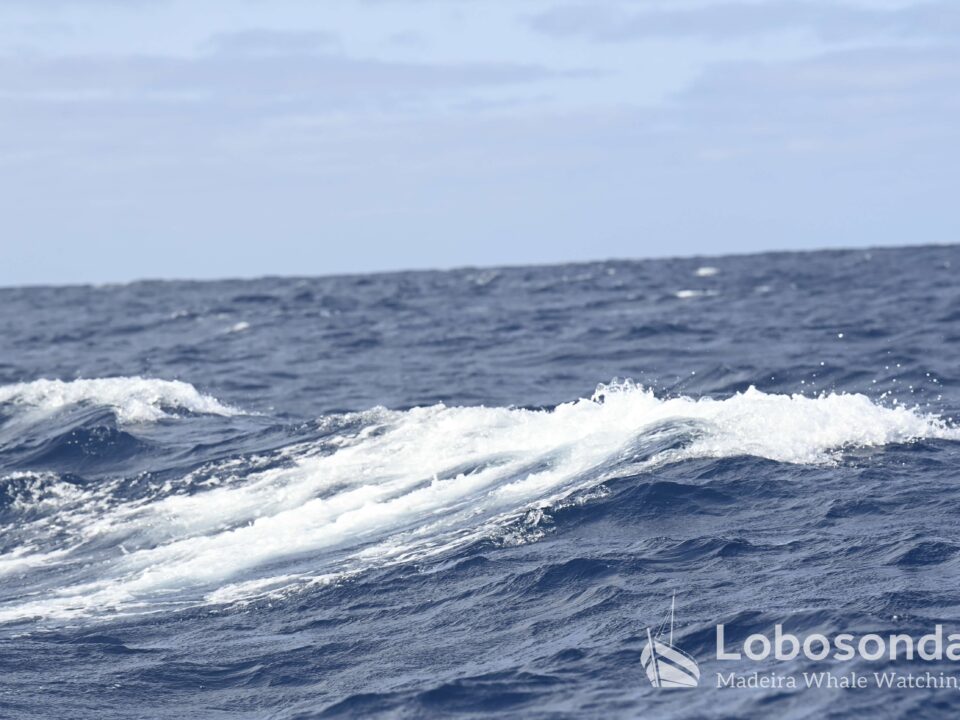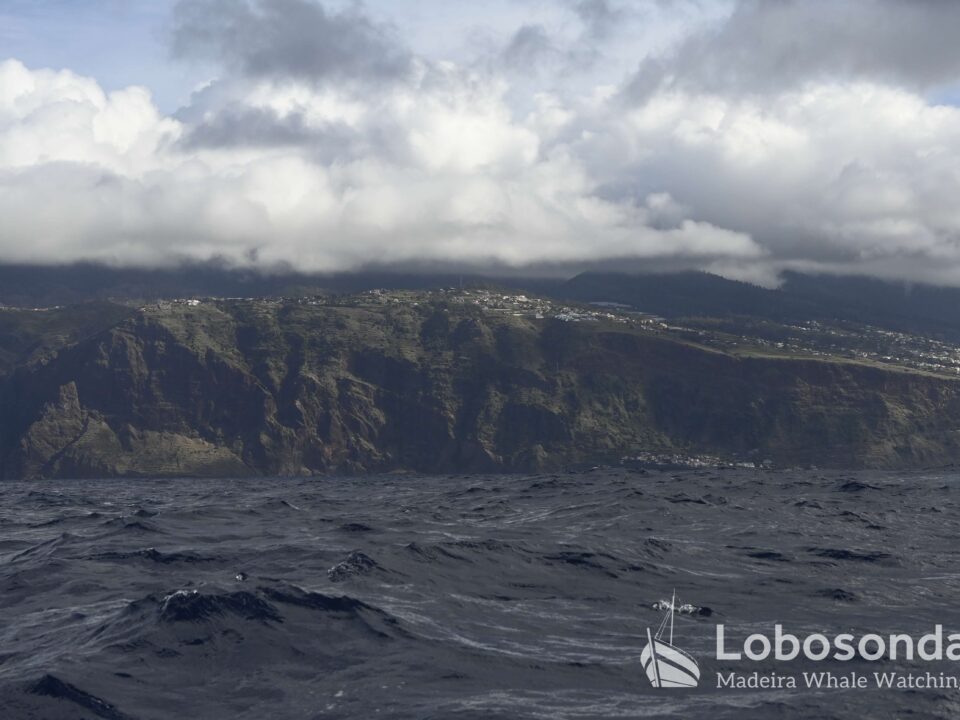25.10.2018 – Tails – Tails – Tails
November 13, 2018
27.10.2018 – A baby was born
November 15, 2018There are days when we literally have animals infront of the marina and then there are days where we have to head out and cover a large search area to find cetaceans. How is this done? Well this is all truly strategic stuff that boils down to efficient communication between spotter and skipper. Our spotter scans the ocean from areas with high altitude using far-range binoculars and directs the team at sea to the animals. If the spotter cannot locate any animals from where he is, he drives to another lookout point, adapting his position according to where both spotter and skipper agree there may be a higher probability of finding cetaceans. Sometimes it just pays off to head out into the high seas to find animals, which what our Ribeira Brava did today.
After an encounter with a small school of Bottlenose dolphins (Tursiops truncatus) near the coast, our crew decided to head 8 nautical miles out into the Atlantic to meet a large, fast-travelling school of Atlantic spotted dolphins (Stenella frontalis). Very often, smaller cetacean species like the spotted dolphins head further out to sea to forage in large groups which was probably the reason for the size and speed of the group. In the afternoon our zodiac covered a large distance West of Calheta in the hope of sighting beaked whales or Bottlenose dolphins. After our team searched far and wide, we unfortunately were not able to return back to the marina with a sighting.
By Paula Thake
Sightings of the day
Ribeira Brava
10:00 Atlantic spotted dolphins, Bottlenose dolphins
Stenella
15:00 No sighting

















